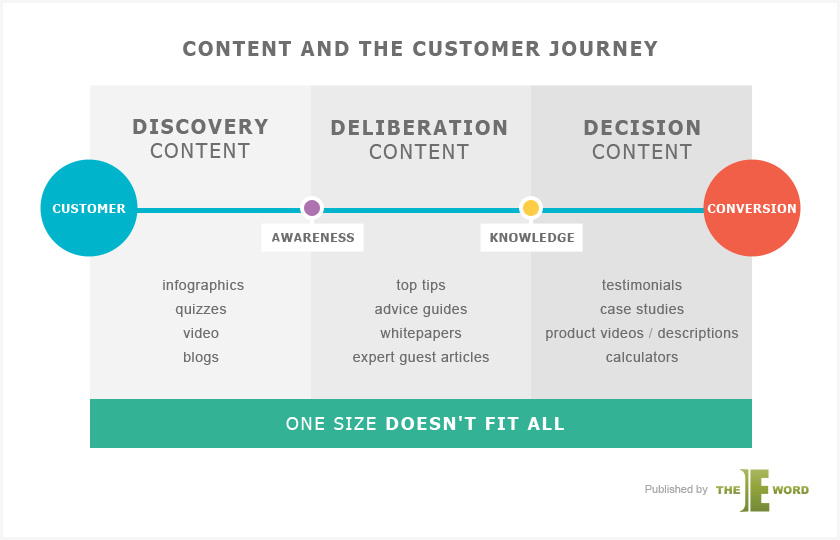
Marketing Automation | June 30, 2017 | 4 min read
4 Key Traits of Successful Marketing Automation Campaigns
Marketing automation has become a part and parcel of the functioning of most digital focused businesses today. From reducing staffing costs to improving the efficiency of the sales and marketing processes, it has a plethora of benefits. Unsurprisingly, brands from across different verticals have been hopping onto the automation bandwagon over the last few years.
However, while automation has plenty of benefits to back it, it can also backfire when not implemented strategically. It can be like a bottomless ditch into which you endlessly shovel money with nothing much to show for. If you want to stay away from such a disaster, you must be aware of the characteristics that define successful marketing automation campaigns. To help you out, we’re listing down 4 traits that you should look for:
One of the important uses of marketing automation is that you get to communicate with your customers in a consistent tone, across all the channels. If you deploy your CRM and marketing automation platform separately, you lose the ability to do so. Even if the same team handles both the platforms, ensuring consistency in messaging on both of them can be tiresome.

Apart from inconsistent communication, data management is another major hurdle that one would face if both the software are maintained separate. Some of the newer data might leak through and not get updated in one of the platforms. That’s bad data hygiene!
Analysis, tracking and reporting becomes smoother when all the user and communications data is handled in a single place. Successful marketing automation strategies always involve seamless CRM integration.
People today are more connected than ever. They have better data connectivity and can choose the device and platform of their choice to consume and share information on the internet. In such a device and platform agnostic world, marketing automation has become all the more important for brands. It has given them the power to communicate with the customers with the right content, on the right platform/device and at the right time.
But implementing such an omnichannel automation is easier said than done. It requires a well thought out content strategy that that aligns perfectly with the customer journey. Whether you’re sending educational or promotional content to your customers, you have to customize it based on their dynamic preferences and online behaviors. Why people registered to use your product or opted to fill out a form on your website might not be the same throughout their buying journey with you. Your content should change as per the need of the customer.
So how do you start building a solid content strategy? You start from the scratch.
Successful marketing automation campaigns always have well rounded content strategies like this:

Lack of accountability. That is one of the most common complaints that sales teams have about marketing in most businesses. Well, it is not unwarranted also, is it? It is easier to blame the sales team when revenue targets are not met, whereas measuring the impact of marketing efforts on revenue is much harder. The effectiveness of sales efforts has a direct correlation with the quality of content that marketing pushes at the customers along their buying journey.
That’s why, the reports of the automation campaigns should measure the effectiveness of content at every stage. Apart from content performance measurement, they should also measure other important metrics like impact on sales cycle, customer data enrichment, etc.
Successful automation campaigns are always employed on platforms that have such a strong reporting feature.
Lead generation: Another important use of marketing automation is lead capture. Without it, most people who land on your website will just remain anonymous visitors. Automation allows you to deploy popups, forms, automatic messenger nudges and landing pages strategically on your website to capture information of prospective customers. Successful automation campaigns use them effectively to generate more leads, thereby directly impacting the bottom line of the business.

Lead nurturing: And while marketing pushes the leads to sales, cold leads often slip through the gaps. Without automation, these cold leads might never hear about your business again unless they accidentally chance upon you somehow! Successful marketing automation campaigns always involve structured drip campaigns that educate the leads over a period of time to augment the need for your offerings. Such lead nurturing campaigns will increase the number of opportunities for sales teams, thus impacting the revenue directly.
Automation has become an essential component of a brand’s marketing machinery today. If you haven’t implemented it already, it is high time that you get on it now. However, after implementation, ensure that you continuously monitor its performance and iterate your strategies accordingly. You can also book a slot for a call with our automation experts for personal consultation on implementation for your business. All the very best.
However, while automation has plenty of benefits to back it, it can also backfire when not implemented strategically. It can be like a bottomless ditch into which you endlessly shovel money with nothing much to show for. If you want to stay away from such a disaster, you must be aware of the characteristics that define successful marketing automation campaigns. To help you out, we’re listing down 4 traits that you should look for:
1. Seamless integration with CRM
One of the important uses of marketing automation is that you get to communicate with your customers in a consistent tone, across all the channels. If you deploy your CRM and marketing automation platform separately, you lose the ability to do so. Even if the same team handles both the platforms, ensuring consistency in messaging on both of them can be tiresome.

Apart from inconsistent communication, data management is another major hurdle that one would face if both the software are maintained separate. Some of the newer data might leak through and not get updated in one of the platforms. That’s bad data hygiene!
Analysis, tracking and reporting becomes smoother when all the user and communications data is handled in a single place. Successful marketing automation strategies always involve seamless CRM integration.
2. High quality content that aligns with the customer journey
People today are more connected than ever. They have better data connectivity and can choose the device and platform of their choice to consume and share information on the internet. In such a device and platform agnostic world, marketing automation has become all the more important for brands. It has given them the power to communicate with the customers with the right content, on the right platform/device and at the right time.
Must read: Advantages of behavioral targeted emails
But implementing such an omnichannel automation is easier said than done. It requires a well thought out content strategy that that aligns perfectly with the customer journey. Whether you’re sending educational or promotional content to your customers, you have to customize it based on their dynamic preferences and online behaviors. Why people registered to use your product or opted to fill out a form on your website might not be the same throughout their buying journey with you. Your content should change as per the need of the customer.
So how do you start building a solid content strategy? You start from the scratch.
- Create well rounded buyer personas before you start setting up automation campaigns, tinkering with segmentation, personalization, etc. You will then realize what kind of content you need to send at different stages of a sales cycle.
- Talk to the sales teams and go through the content that has worked for them in their interactions with the customers.
- Keep in mind the best practices of writing personalized copies for different messaging channels. What works in emails might not work on social media and vice versa.
Successful marketing automation campaigns always have well rounded content strategies like this:

3. Actionable reports
Lack of accountability. That is one of the most common complaints that sales teams have about marketing in most businesses. Well, it is not unwarranted also, is it? It is easier to blame the sales team when revenue targets are not met, whereas measuring the impact of marketing efforts on revenue is much harder. The effectiveness of sales efforts has a direct correlation with the quality of content that marketing pushes at the customers along their buying journey.
You should also check out: 3 Ingredients to Build A Great Digital Customer Experience
That’s why, the reports of the automation campaigns should measure the effectiveness of content at every stage. Apart from content performance measurement, they should also measure other important metrics like impact on sales cycle, customer data enrichment, etc.
Successful automation campaigns are always employed on platforms that have such a strong reporting feature.
4. Impact on the bottom line
Lead generation: Another important use of marketing automation is lead capture. Without it, most people who land on your website will just remain anonymous visitors. Automation allows you to deploy popups, forms, automatic messenger nudges and landing pages strategically on your website to capture information of prospective customers. Successful automation campaigns use them effectively to generate more leads, thereby directly impacting the bottom line of the business.

Lead nurturing: And while marketing pushes the leads to sales, cold leads often slip through the gaps. Without automation, these cold leads might never hear about your business again unless they accidentally chance upon you somehow! Successful marketing automation campaigns always involve structured drip campaigns that educate the leads over a period of time to augment the need for your offerings. Such lead nurturing campaigns will increase the number of opportunities for sales teams, thus impacting the revenue directly.
Final words
Automation has become an essential component of a brand’s marketing machinery today. If you haven’t implemented it already, it is high time that you get on it now. However, after implementation, ensure that you continuously monitor its performance and iterate your strategies accordingly. You can also book a slot for a call with our automation experts for personal consultation on implementation for your business. All the very best.


